Ground source heat pumps cost less than you think, with 0% VAT alongside either a £7,500 grant from the UK’s Boiler Upgrade Scheme or a £9,000 grant from Home Energy Scotland.
Now is the time to talk to Kensa about being truly ground-breaking!
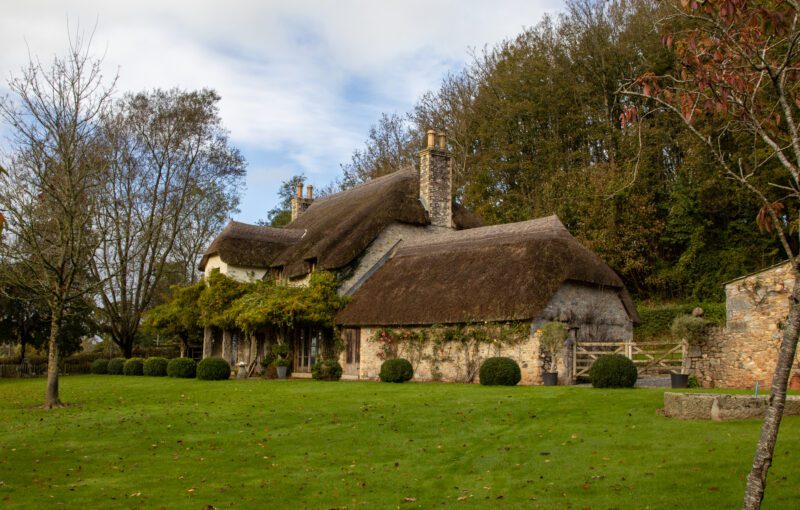
Ground source heat pumps cost less than you think, with 0% VAT alongside either a £7,500 grant from the UK’s Boiler Upgrade Scheme or a £9,000 grant from Home Energy Scotland.
Now is the time to talk to Kensa about being truly ground-breaking!

Switching to a ground source heat pump is simple.
Ground source heat pumps can be easily integrated with your preferred controls and heating distribution system. No planning permission is required, and the unit is easily installed inside your home to provide 100% of your heating and hot water needs. Unlike fossil fuel heating systems, a Kensa ground source heat pump doesn’t need servicing and requires minimal maintenance over its 20-year design life.
If you are looking to replace an old oil boiler, switch from direct electric heating, or seek energy independence by moving away from gas, ground source heat pumps are suitable for all property types. They are a long-term, cost-effective, energy-efficient alternative. Benefit from a quiet, unobtrusive heating solution compared to an oil tank or air source heat pump.
Ground source heat pumps are a smart investment; they add value and protect against fluctuating energy prices.
The UK government has announced ambitious targets to cut carbon emissions by 78% by 2035. By using a ground source heat pump for domestic heating, you’re future-proofing your property and taking a vital step towards reducing carbon emissions.
Ground source heat pumps are the most energy-efficient heating technology available, so only a small proportion of the power needed to run the heat pump will be affected by rising energy costs – the rest of the energy comes from the ground.
In England & Wales, the government-funded Boiler Upgrade Scheme will provide a grant of £7,500 to those investing in a ground source heat pump.
Homeowners UK-wide are eligible for a 0% VAT rate for domestic purchases of heat pumps until 31st March 2027. Full details can be found here.
Grant funding is available for the installation of heat pumps of up to £7,500, or £9,000 for Scottish households that qualify for a rural uplift.
Homeowners in Scotland might be able to spread the cost of installation with an interest-free loan. Full details can be found here.


You can save even more on your heating bills with a ground source heat pump using time-of-use tariffs, smart controls and thermal storage.
Dynamic tariffs charge consumers different prices for electricity at different times of the day. Smart controls learn your heating preferences and your property’s heat physics, turning your heat pump on when you need it at cheaper times to provide helpful running cost savings.
Your ground source heat pump will maintain a consistent, comfortable temperature throughout the day, providing 100% of heating and hot water demands. It can operate when lower-cost electricity is available and there is extra capacity in the grid. Thermal batteries can store the heat generated during off-peak hours when electricity is cheaper.
Ground source heat pumps last twice as long as a gas boiler and are more efficient than air source heat pumps, meaning you benefit from lower running costs and higher carbon savings in the long run.
Air temperatures fluctuate, dropping overnight and during the winter. Air source heat pumps consume more electricity at these times to ensure they provide sufficient heat. Even on the coldest day in winter, ground temperatures stay constant all year round, so there is always 10-12 degrees of heat running through a ground source heat pump system.
When you switch on your gas boiler, you start from zero, paying for 100% of the gas used. A ground source heat pump delivers 3 to 4 kilowatts (kW) of heat for every 1 kW of electricity it consumes. The extra 3kW heat comes from the heat absorbed from the ground.
Gas boilers are around 90% efficient – GSHPs are 300-400% efficient. A system that delivers much more electrical energy than it consumes will deliver lower running costs for your household and, with a stable heat source, will not experience efficiency losses when you need your heating the most.
GET A HEAT PUMP QUOTE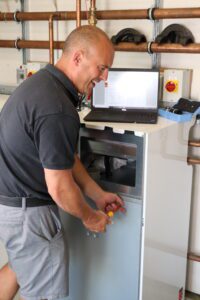

We are solely committed to ground source technology, so there’s more focus on creating the best, simplest and most efficient heating and hot water solutions for your home.
Kensa manufactures some of the best heat pumps for homes on the market from our state-of-the-art facility, with every system designed and built in the UK specifically for British properties.


Kensa really are a first-class British engineering success story. Great products and brilliant customer service. If you are thinking about a heat pump, you must contact them and put them in the mix, in my opinion.Kensa Customer
There are many benefits to ground source heat pumps including:
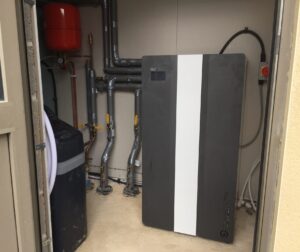

Ground source heat pump units are quiet and compact enough to be installed inside the home and can last between 20-25 years. Kensa has also designed the smallest and most compact ground source heat pump on the market – the Shoebox heat pump – which is perfect for flats or smaller properties and easily fitted inside airing cupboards or kitchen cabinets. The heat collectors that extract renewable energy for the system are visually unobtrusive and virtually invisible when the ground is made good. They can last for up to 100 years, representing an investment in renewable heating infrastructure.
Ground source heat pumps are easy to install in your home. Installing a Kensa ground source heat pump is similar to installing a standard boiler. Our heat pump systems are specifically designed to be installed in British properties without needing specialist training. Any competent builder or plumber is capable of installing one.
We have had a Kensa heat pump for many years as early adopters of the technology. It has been really reliable with minimal problems.Kensa Customer
The more efficient your home is, the lower your heat demands. The effectiveness of insulation and other energy efficiency measures will determine the size of the heat pump you need, its capacity and how much your bills could cost.
You don’t have to add insulation before getting a ground source heat pump. It doesn’t matter if you run a gas boiler or a ground source heat pump; heat is better contained inside an insulated building. If you plan to better insulate your home, thur heating system will perform better and help lower your running costs.
However, homeowners are not required to spend tens of thousands of pounds on insulation to make a ground source heat pump effective! Every 1°C reduction in heat demand heightens the efficiency of a heat pump by roughly 2%.
Homes can also upgrade their heating distribution systems to suit a heat pump’s low-flow temperature better.
Underfloor heating works well with a heat pump because the heat is spread across a larger surface area, but larger, low-surface temperature radiators can also be effective. These will feel warm rather than hot to the touch, but they will be sized large enough to ensure the required room temperatures are reached even during the coldest winter days.
This doesn’t necessarily mean replacing all your radiators, though. Existing radiators can be utilised by moving them around. e.g. move the current living room radiator to the bedroom and install a new larger radiator for the living room.
Changing radiators is far easier, quicker and cheaper than people give credit for – in small apartments, a whole system can be replaced within a day. The cost differential to upsize them for a lower flow temperature of 50ᵒC is minimal. Radiators typically need replacing every 15 to 20 years.
With a government grant of £7,500 from the Boiler Upgrade Scheme and 0% VAT, installing a ground source heat pump costs less than you might think.
Ground source heat pump prices start at £4,450 for the Kensa Shoebox, which is ideal for flats, apartments and 1-2 bed properties.
The Kensa Evo starts at £7,365 and is ideal for medium to large 3-4 bedroom homes.
This example is based on a single property connected to a 13kW Kensa Evo ground source heat pump with a slinky ground array:
Ground source heat pump costs depend on three main factors: the cost of the heat pump unit, the installation cost, and how much the heat pump costs to run.
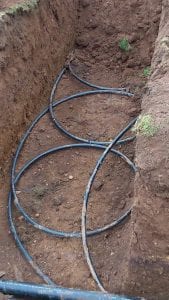

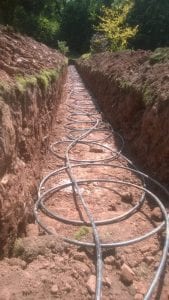

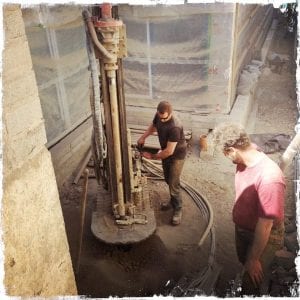

Heat from the ground, or a water source, can be extracted using one of the following heat collectors: boreholes, slinky pipes and pond mats – all vary in size, price and efficiency.
The heat collector you have installed will depend on your home’s location. For example, slinky pipes are perfect if you have land, you can use pond mats if your home is within 100m of a water source, or you might need boreholes to save on space.
Slinky trenches are usually the cheapest and easiest to install. They don’t need a specialist drilling contractor, as a digger can undertake the installation work. However, slinky pipes must have sufficient land area to collect and deliver the energy requirements of the building.
In some cases, calculations may show that your available garden area isn’t quite big enough for the amount of heat collectors needed to meet your home’s heat demand. Heat collectors are sized to meet the heat needs of the building, not the heat pump.
An energy-efficient solution is to improve the building’s insulation to reduce the heat load; that way the available garden area may well become viable as the heat source. It may even be possible to specify a smaller heat pump, further offsetting the installation costs.
No, most people installing a ground source heat pump will not be faced with a bill for expensive upgrades to their electricity supply.
The majority of properties in the UK run off a single-phase connection, which is fine for ground source heat pumps with an output of around 13kW and below. A heat pump of this size would provide ample heat and hot water in an older home with three or four bedrooms.
In cases where larger heat output is needed and a three-phase connection is required, the power companies will usually upgrade this for free on behalf of a homeowner.
Ground source review: Rural Farmhouse Retrofit Two Kensa 15kW Evo’s were installed to deal with the heating and hot water demands of an old farmhouse conversion with a swimming pool in a picturesque rural farm in the South West of England.